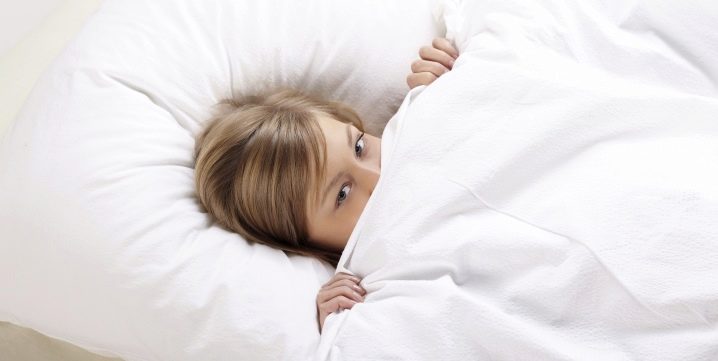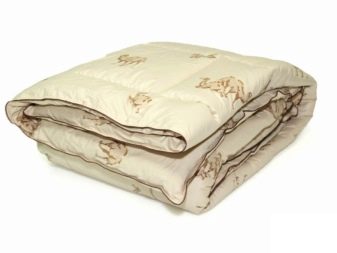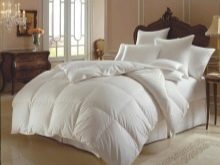Camel wool blankets

A fairly large number of ordinary people are familiar with camel wool blankets since childhood. Warm, slightly prickly, moderately tough, while extremely light - this is the main characteristic of those products that were popular 20 years ago. Now these products are completely different - very soft, delicate to the touch, in stores you can buy blankets in the most pleasant colors for yourself. And if you take into account the huge assortment of models, then before buying, you should definitely find out how to choose and purchase a good blanket made of high-quality camel wool.

What is better than bamboo and sheep blankets?
What are the pros and cons of these blankets today can be identified? The positive aspects of such an acquisition include:
- Low thermal conductivity. This material perfectly retains body heat in winter weather and does not heat up in the summer season.
- Excellent air tightness.
- Wear resistance. If you take good care of the blanket, then it will not lose its quality over the next 2-3 decades. The service life of the product in everyday use is from 7 to 9 years.

- Light weight - due to the special structure of camel hairs.
- Elasticity. Such a product does not change its original shape for a long time, even after numerous cleanings.
- High degree of moisture absorption - natural material perfectly absorbs human sweaty secretions and evaporates them just as well.
- Antistatic. Camel wool does not accumulate electricity, and therefore will not attract dust particles.


Such blankets have few negative qualities:
- Thorniness. This characteristic applies only to products made from the wool of aged camels, and even then, if these blankets are woven. Using a regular duvet cover can completely neutralize this characteristic.
- Allergenicity. Approximately 1% of people are allergic to camel hair. Many people are ambivalent about the dust mites that live in this material. Therefore, this blanket is not suitable for allergy sufferers. That is why it should be ventilated more often and with better quality, and annually cleaned with chemical reagents.


- Small color choice - from white to dark brown (camel hair actually does not lend itself to processing with chemicals, dyes, does not want to keep the color).
- High price... An original product, especially if it is made from the fur of small camels, is not cheap, which is quite justified by its positive qualities.
If you do not know which blanket to give preference to - from bamboo or from camel wool, then the first option should be given preference only if you are allergic to camel material or have asthma.


Today, many people buy blankets from the fleece of sheep, but in this case you should know that products made of sheep wool are much heavier, they are not washed at all, they do not have a pleasant smell, and once every 3 months they must be given for dry cleaning, which is financially very expensive. The only advantage of a good sheep blanket or other accessory is better thermal insulation and lower cost, but a camel wool blanket is incomparably warmer.
How is it useful?
In folk medicine, camel wool is actively used to reduce rheumatic pains and symptoms of bone diseases, it perfectly stimulates blood circulation, increases muscle tone, and promotes high-quality relaxation.

The content of lanolin in camel wool is the highest when compared to other natural materials. It is this "animal" wax that is released and absorbed at normal body temperature and has the most healing qualities. In addition, the camel blanket: significantly improves metabolism, removes toxins from the body, rejuvenates human skin, increases its elasticity, allows you to quickly remove any inflammation in the body, protects against the action of electromagnetic fields.



Views
Modern manufacturers offer consumers 2 types of products.
- With an open surface. They are produced on modern equipment, thus obtaining the thinnest, but very warm blankets. They may seem somewhat heavy and rough if made from the wool of already grown camels. Flexible and soft blankets are made from real camel down: they are also pleasant to the touch and are very similar to traditional warm blankets. A lightweight blanket usually costs a little less.
- With a closed surface. These are blankets in the form of covers with filling that is sewn along the entire length of the product. In this case, only wool is used, since it is easier to process and much cheaper than down. The woven cover makes such blankets completely non-prickly, even more practical, especially if they use baby camel down filling.


Closed models differ from each other in the manner in which the inner material is positioned in the case.
- Quilted camel wool. These are one of the most inexpensive models, in which the stitching is made in the form of sewing lines running in parallel, with rather significant distances between these lines. The filler in such products is fixed rather weakly, it is often not very evenly distributed, which can cause clumping.
- Karostepnye. These products are sewn with strings in the form of patterns across the entire surface of the blanket. Such fastening comes out of the highest quality, but the wool all the same after a while knocks into large and small lumps and comes out to the top of the product through needle punctures.


- Cassette. The product is sewn both longitudinally and transversely, thus forming small voids for the inner filler. In this case, the filler cannot move from one cassette to another, and therefore does not get lost in lumps. These models are the most popular with buyers.
- The most expensive option is a jacquard camel wool blanket. These types of blankets can be either 100% wool or an admixture of cotton or synthetic fibers. Jacquard with wool is also considered a very durable material.


Composition
Very often, various additional fillers can be found in camel wool blankets.
If the tag says "wool - 100%" - in front of you is a clear filler from a mixture of camel and sheep wool. Typically, the percentage ratio of these two types of wool is 40 to 60%, 30 to 70%, or 50 to 50%. A blanket with a mixed material is much heavier, it is much more voluminous, but it costs less and retains the naturalness of a single piece.
Also, very often in stores you can find a version of a blanket with a thermally bonded inner material. It is an almost homogeneous material, obtained by passing wool through a heated roller, where it is glued with artificial fibers. The content of the wool component in such material is usually proportional to the price of the final product.


There are also different types of blankets made from camel undercoat, for example, according to some standards, the fluff of the Mongolian animal Bactrian is considered the highest quality. The cost of such a blanket can be unaffordable and truly fabulous for many ordinary people.The delicate down of non-working baby camels is also highly valued; it is distinguished by its special airiness and lightness. Blankets made of such fluff are classified as elite products, their cost sometimes also goes off scale.
Wool is much cheaper than down because it is coarser, heavier and harsher. But very often recently you can find a product that combines both wool and down in its composition - this is, for example, a down camel blanket.

Products made from the down and wool of a camel perfectly keep the warmth of the body of an adult and a child. Thanks to them, the body rests perfectly during dreams, and the skin breathes. This is the most successful option for relaxing at home and in the country, the models are suitable for both summer and winter seasons. Pleasant to the touch, has a silky surface structure, not prickly, comfortable for the body.

Dimensions (edit)
If you want to buy a truly suitable blanket for your bed, you must first focus on the size of your bed. The standard sizes of camel wool blankets will be:
- 110x140 cm, 140x140 cm - baby blanket;
- 140x205 cm –1.5 sleeping blanket;
- 170x200, 172x205 cm - double blankets;
- 200x220 cm - double euro blanket;
- On sale you can also find a king size double blanket 220x240 cm.



Manufacturers
Our consumer today has a huge demand for blankets made of high-quality camel wool from Mongolian manufacturers, since the wool of Mongolian camels is considered one of the best. The release of goods from the wool of Mongolian camels was quickly mastered by both European and domestic firms. To be completely sure of the high quality of the purchased products, you should carefully read the tag on the product, paying attention to where the wool was collected and to the name of the company that produced this product.
- "GOBI". This is one of the most recognizable Mongolian brands of quality natural wool blankets without synthetics. These products are immediately striking for their beautiful appearance, quite acceptable cost, high quality workmanship.
- "Aelita" (Ivanovo). This domestic manufacturer sews stylish blankets in durable covers from natural fabrics from local factories. You can always choose products of various completeness and density to your liking in the product catalog.



- Troitsk worsted factory. It offers consumers wool blankets and lightweight blankets. The most prestigious models are woolen "Karakum"And downy"Sahara».
- Dargez. A Russian concern that has long been producing high-quality woolen quilts and weightless blankets. List of modelsSahara"Targeted at adult consumers, a collection of blankets"Baby camel"- for kids.
- Billerbeck. The German-Ukrainian company offers stylish blankets for children from combed camel wool in a sturdy satin cover.

How to choose?
If you want your two-humped animal blanket to last as long as possible, then you need to know the basic rules for choosing this kind of product. First, you need to pay attention to parameters such as:
- The degree of warmth. In order to find out this degree, you need to count the number of "points" in the product labeling (usually from 1 to 5 points) or inquire about the density of the material used (g / m2). A high-quality camel wool blanket is also selected depending on the season, the quality of heating in the home, and personal taste desires:
- very warm (5 dots; approx. 880-900 g / m2) - best used in cold rooms, great for constantly freezing people;
- just warm (4 points; from 420 to 500 g / m2) - the best winter product, most suitable for cold seasons;
- all-season (3 dots; about 350 g / m2) - the best option for use all year round;
- lung (2 points; from 200 to 220 g / m2) - such a blanket is needed for cool rooms in the off-season;
- summer (1 point; from 160 to 180 g / m2) - for a cool summer or for use as a warm blanket in winter.

- Composition of the original material. The most expensive are the models made from the undercoat of young camels, because in terms of its soft composition and airiness, this fur resembles light down. Products made from such fluff come out unusually warm and not at all prickly, therefore they are used without the usual duvet cover. In terms of the warmth and durability of use, you will also like the familiar camel wool blanket. Modern manufacturers often combine wool and down with synthetic fibers. Remember that such a product will cost much less than other blankets, but its insulating properties will be much lower. The percentage and ratio of the components of the blanket are always indicated on the tag.


- Workmanship. The main features of a high quality blanket are:
- homogeneous product structure;
- uniformity distribution of wool in models with a cover;
- absence hairs of wool visible through the cover material;
- the edges of the products are best, to be trimmed with a tape or processed using an overlock, while the seams of the threads should mainly be strong and even;
- Availability a high-quality and durable cover made of natural fabric - it is best to use teak and satin, and in elite models they also use fabric made of eucalyptus fibers.



How to distinguish from a fake?
The demand among ordinary people and the excellent quality of camel wool attract the attention of manufacturers who want to increase their profits by counterfeiting products: they exchange natural wool fibers for artificial substitutes and cheap synthetic fibers. The cost of such a "camel" blanket is significantly lower, which attracts many inexperienced buyers. At the same time, one should not expect all those positive qualities from such products that the original product has, so it is better not to save on buying this kind.
How to distinguish a really camel woolen blanket from a surrogate, what criteria should you pay attention to in the first place?
- Camel wool blanket by weight, it will be significantly lighter than a sheep product.
- If the material is really of natural origin, it will be soft and gentle when touched, but if you encounter rough hairs under your fingers, this directly speaks of the synthetic origin of the product.


- You can also pull out a few hairs. out of the blanket and set on fire. Real wool will burn very badly, extremely slowly, and the smell will be characteristic and similar to the smell when the hair is burning.
- Hreal camel hair it is almost impossible to paint, so if the model is too bright, then it is a fake.
- If one of the components of the blanket are synthetic fibers, then this is a semi-woolen model, even if these fibers are only 5%.

How to care and clean?
There is still controversy over whether a camel wool blanket can be washed. Moreover, some ordinary people claim that it is categorically forbidden to do this, others claim that it is possible to wash, but such washing should be as gentle as possible.
To maintain the daily cleanliness of a new camel wool blanket, the most experienced housewives advise to use the blanket cover on a regular basis. It will become the most reliable protection against surface contamination and then you do not need to go to dry cleaning. At the same time, do not forget to regularly ventilate the product - in order to remove the unpleasant smell, the woolen sleeping device is hung out on the street for only 30 minutes.

Stains from such a blanket can only be removed using conventional means. For this purpose, for example, products with lanolin are perfect, which foam and this foam gently cleans the blanket material.But still it is best to give the product from time to time for specialized cleaning.
How to wash by hand?
It is necessary to take water of a low temperature into the bath, and add a little detergent for washing things made of natural wool into it. The blanket is left in this mixture for 5 or 6 hours, and then it is washed with a little effort (hands are slightly crumpled from different sides). By draining the dirty water and replacing it with cool, clean water, the blanket is gently rinsed out. In order for all the water to be glass from the blanket, it is necessary to fold the product in 2-3 layers and hang it for a couple of hours. After that, the product is carefully squeezed out, and you can dry it only on the street, throwing it from the dry side to the wet as it dries.

Washing in a washing machine
A camel wool blanket can be washed only at a temperature of no more than 30 degrees and only in a gentle mode, which is intended specifically for washing woolen products. The original detergent is added in a small amount so that it is not difficult to rinse out the blanket. It is impossible to squeeze out a wool product in a machine wash - it can lose its shape once and for all.

You can watch a quick overview of one of these blankets in the video below.













The comment was sent successfully.